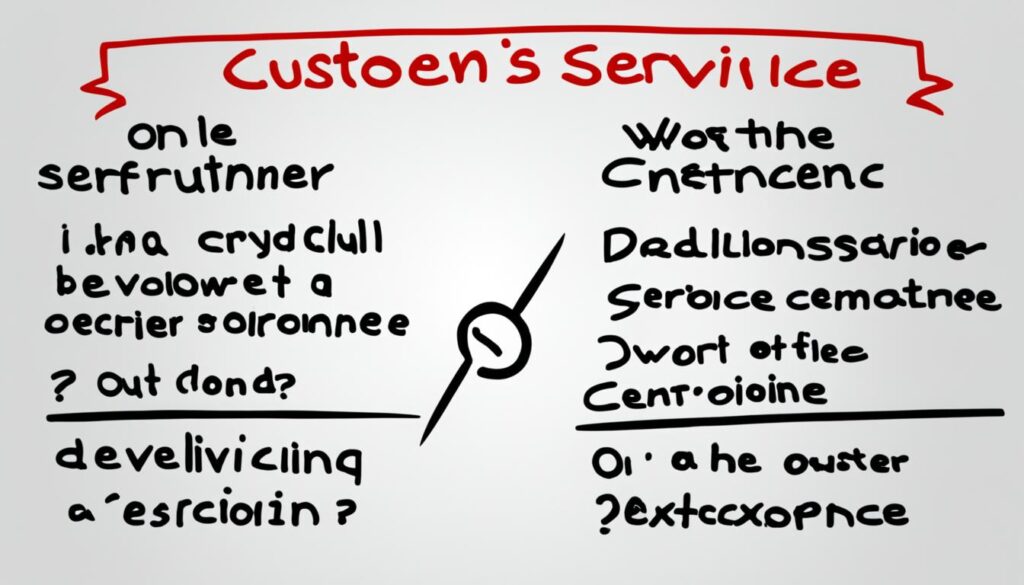Welcome to the world of customer service! In today’s competitive business landscape, providing an exceptional customer experience is paramount to your success. Customers have the power to choose, and their expectations are higher than ever before. To meet these expectations and create lasting relationships, you need to have a comprehensive strategy that focuses on every stage of the customer journey.
From the initial customer onboarding process to the ongoing support and beyond, your approach to customer experience can make or break your business. Customer satisfaction, retention, and ultimately, customer success are directly influenced by the quality of your customer service experience. By implementing best practices in onboarding, customer journey mapping, and more, you can elevate your customer service and gain a competitive edge.
In this article, we will dive into the importance of customer experience and its impact on your bottom line. We will also explore the difference between customer service and customer experience, as well as strategies for improving the overall customer experience. So, let’s dive in and discover how you can enhance your customer service experience strategy to drive customer satisfaction, retention, and success.
The Impact of Customer Experience
Research has demonstrated the significant impact of customer experience on business success. According to American Express, 86% of customers are willing to pay more for a better experience. This highlights the importance of providing exceptional customer experiences to drive satisfaction and loyalty.
Companies that invest in customer experience can expect substantial benefits. In fact, research shows that these investments can result in a 70% increase in revenue within three years. By prioritizing customer experience, businesses can differentiate themselves from competitors and attract more customers.
Additionally, customer experience plays a vital role in brand differentiation. It is the number one brand differentiator and can set businesses apart from their competitors. By delivering personalized experiences tailored to individual customer needs, companies can foster strong connections and drive increased sales.
Furthermore, a positive customer experience has long-term effects on customer loyalty and retention. Customers who rate companies with high customer experience scores not only spend more but also remain loyal for up to six years. This demonstrates the importance of consistently delivering exceptional experiences to maintain customer satisfaction and build lasting relationships.
“Investing in customer experience is no longer optional—it is necessary for business survival and growth. By prioritizing customer needs, delivering personalized experiences, and fostering loyalty, companies can achieve increased satisfaction, lower churn rates, and ultimately, drive higher revenues.”
The Power of Customer Experience
Customer experience has a direct impact on customer satisfaction, retention, and overall business success. By investing in strategies to enhance the customer experience, businesses can create a competitive advantage and drive increased revenues. With customers being willing to pay more for better experiences, it is clear that prioritizing customer experience is crucial for long-term success.
The Difference Between Customer Service and Customer Experience
While customer service is an important component of customer experience, they are not the same. Customer service refers to the interactions when a problem occurs, while customer experience encompasses the entire customer journey. Customer service is reactive, focused on addressing issues, while customer experience is proactive, aiming to create positive feelings.
Customer service relies on specific metrics such as CSAT (Customer Satisfaction) scores to measure success, while customer experience is evaluated using the Net Promoter Score (NPS). Customer service is transactional, dealing with immediate customer needs, while customer experience is experiential, building lasting relationships.
Ultimately, customer experience is the responsibility of the entire company. It requires a customer-centric approach and an understanding of the interaction between different touchpoints. By focusing on delivering exceptional experiences at every stage of the customer journey, companies can foster a strong relationship with their customers and drive loyalty.
Customer Service vs. Customer Experience: A Comparison
- Customer Service: Reactive, problem-solving approach
- Customer Experience: Proactive, focused on creating positive emotions
- Metrics: CSAT (Customer Satisfaction) scores vs. NPS (Net Promoter Score)
- Transaction: Immediate issue resolution vs. building long-term relationships
- Responsibility: Department-specific vs. company-wide
To illustrate this distinction further, imagine a scenario where a customer encounters an issue. Customer service would address the problem through timely support and problem resolution. On the other hand, customer experience would aim to anticipate customer needs, create seamless interactions, and provide personalized experiences throughout the entire journey.

Strategies for Improving Customer Experience
To enhance your customer experience, it is crucial to prioritize customer needs and gather their valuable feedback. Listening to your customers and making them feel valued can lead to positive reviews and increased loyalty.
“Listening to our customers has been invaluable in improving our customer experience. Their feedback has helped us understand their needs better and make the necessary adjustments to meet and exceed their expectations.”
Setting clear performance metrics, such as customer satisfaction scores and first contact resolution rates, provides direction and accountability for your customer service team.

Streamlining your processes, implementing quality assurance frameworks, and leveraging technology can optimize efficiency and enhance the overall customer experience.
Process Optimization
By analyzing and streamlining your customer journey, you can identify areas of improvement and eliminate any unnecessary steps or bottlenecks that may hinder the customer experience.
Quality Assurance
Implementing quality assurance practices ensures that every interaction with your customers meets or exceeds their expectations. Consistently delivering high-quality service builds trust and customer satisfaction.
By continuously optimizing your processes and prioritizing quality assurance, you can create a seamless and exceptional customer experience that fosters long-term loyalty and satisfaction.
- Implement customer feedback loops to gather insights and identify pain points.
- Train your customer service representatives to actively listen and empathize with customers.
- Leverage technology to provide efficient and personalized support.
- Regularly review and refine your customer service processes to ensure efficiency and effectiveness.
- Invest in tools and systems that enable data-driven decision-making and performance tracking.
By employing these strategies and continuously seeking ways to improve, you can enhance your customer experience, boost customer satisfaction, and drive long-term success for your business.
Conclusion
Enhancing your customer service experience strategy is crucial for improving customer satisfaction, reducing churn, and increasing revenues. By prioritizing customer experience, implementing customer-centric strategies, and focusing on continuous improvement, businesses can create a competitive advantage and foster long-term customer relationships.
Investing in the right tools, coaching and training employees, and creating a culture of transparency and recognition will contribute to a successful customer service experience strategy. Remember, a great customer experience leads to customer success and positively impacts overall business success.
FAQ
What is customer experience?
Customer experience refers to the overall perception a customer has of their interactions with a company throughout their entire journey, from the first point of contact to post-purchase support.
How does customer experience differ from customer service?
While customer service focuses on addressing specific issues or problems, customer experience encompasses the entire customer journey and aims to create positive feelings throughout every interaction.
What metrics are used to measure customer service and customer experience?
Customer service is typically measured using CSAT (Customer Satisfaction) scores, while customer experience is measured using the Net Promoter Score (NPS).
How can businesses improve customer experience?
Businesses can prioritize customer needs, actively gather feedback, set performance metrics, streamline processes, implement quality assurance frameworks, and leverage technology to enhance the customer experience.
Why is customer experience important for business success?
Customer experience has a significant impact on business success as it leads to higher customer satisfaction rates, reduced customer churn, increased revenues, and fosters long-term customer relationships.
